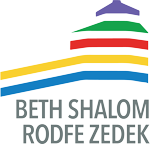Scrollers Preview
Parashat Bamidbar
5/28/11
Rabbi Rachel Goldenberg
The modern commentator, Hirsch, contrasts this book of Bamidbar (Numbers) with the previous book of Vayikra (Leviticus) when he writes that Bamidbar contrasts, “the people of Israel as it actually is” to “the ideal to which it was summoned in Va-yikra.”
This week we begin a new book, and I think that Hirsch got it right. This book of Bamidbar is gritty and harsh. It takes us down from the heights of the vision of an ideal priestly society outlined in Leviticus to the muddy, messy, earthly realm of these Israelites who are forever kvetching and rebelling and misbehaving.
This Parasha opens with what we usually call a census, but which really is a military draft. It continues with the layout of the Israelite camp like an army encamped troop by troop around the Tabernacle. Then we have a section that focuses mostly on the Levites and its clans and their duties. At the end of chapter 3, we learn that the Levites stand in for all of the first-born of the Israelites to serve God. The Parasha ends with instructions to the priests and Levites on how to break down the Tabernacle and transport it when they are on the march.
Rabbi Lawrence Kushner and the playwright David Mamet collaborated on a book of short essays related to each Torah portion. Mamet’s essay caught my attention this week. He sees a motif in our Parasha of child or infant sacrifice, in the form of the draft. Here is Mamet’s response to our Parasha, Bamidbar:
Much of the tropism to war must be infant sacrifice. The English and Germans—armies of the two most advanced and philosophic countries in the worlds of 1914 – convened across a trench to slaughter each other. Sixty thousand young men were sent to Vietnam to die in an action pointless and absurd unless its point was the very death of these young men. They died to assuage anxiety on the part of the elders themselves, in the world. Or, to put it differently, they died as a sacrifice to the sun god – a propitiation. The student opposition to the war was disproportionately Jewish – that is to say, Jews were less likely to embrace blindly the tropism to infant sacrifice. Can one trace the roots of that reluctance to the Akedah, and see the autonomic attempt at its reinstitution in this story of the draft? Does a nation require a draft as much for its psychic integrity as for its military purposes? Was the draft a proclamation of having as a nation succeeded to the status of Elder; and, so, of being prepared to sacrifice the young?
I’d like to discuss this Parasha in light of Mamet’s interpretation, first of all because it is a powerful commentary on the idea of a draft. I also see in this essay a kind of response to the idea of the redemption of the first-born and the “sacrifice” of the Levites to serve God. Looking forward to a lively discussion tomorrow!
Shabbat Shalom, Rabbi Goldenberg

No comments:
Post a Comment